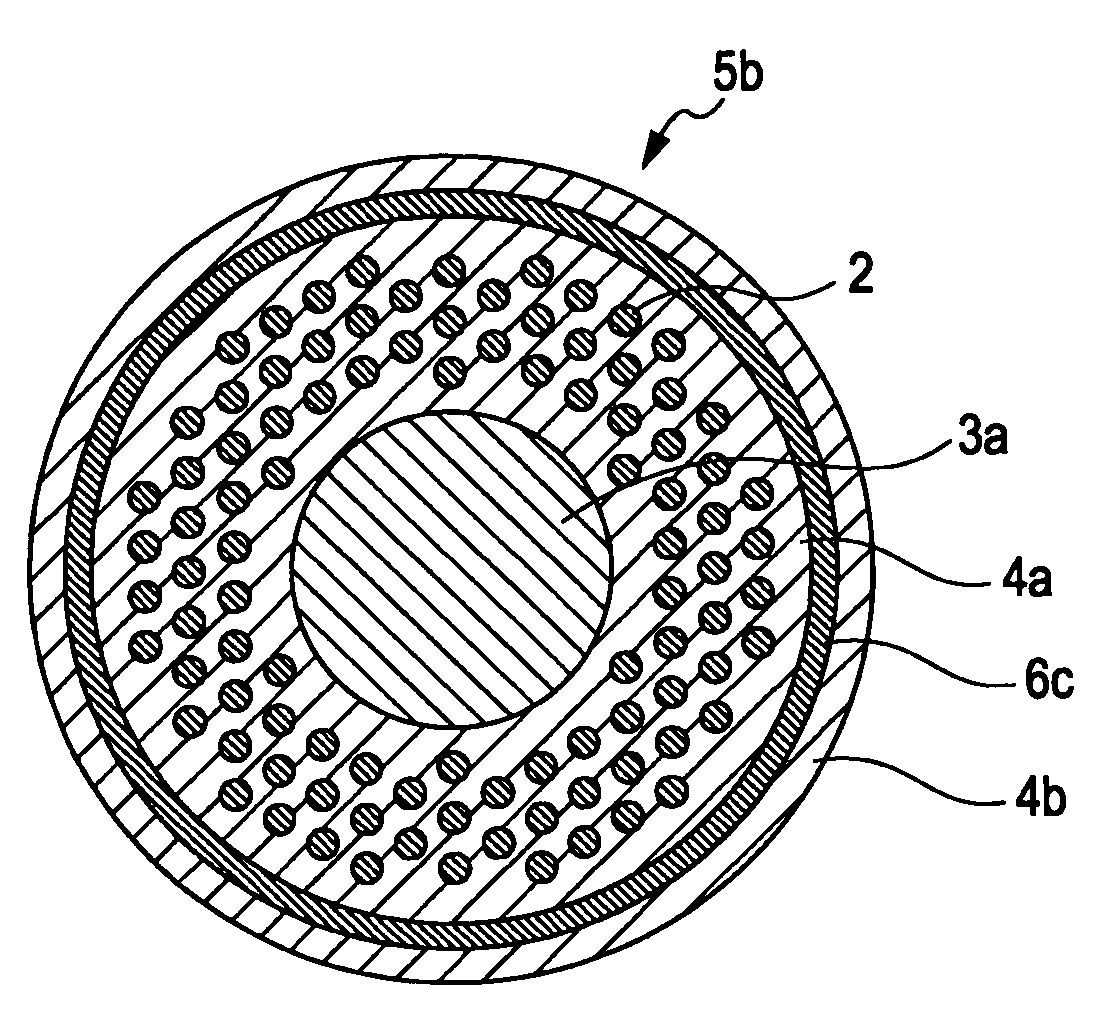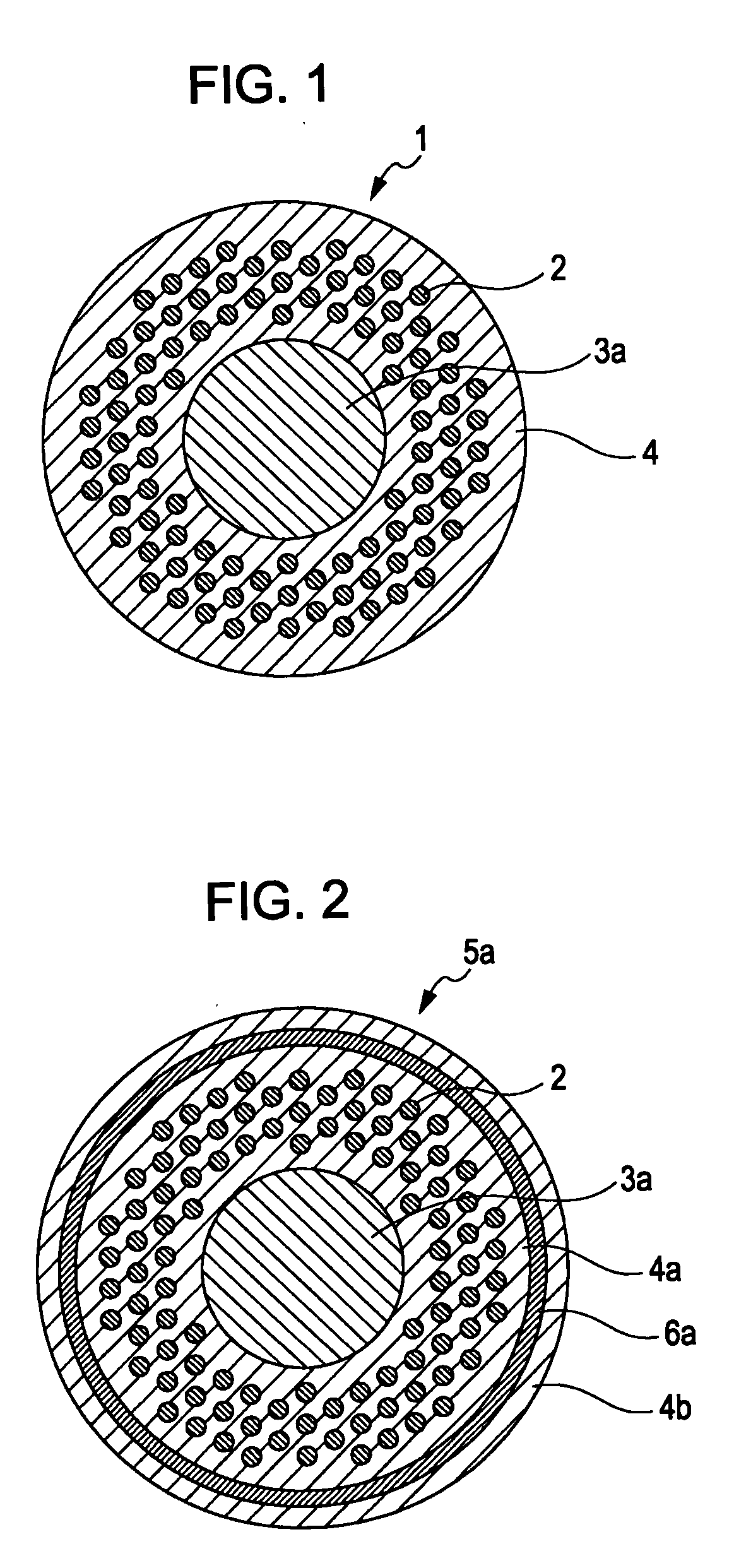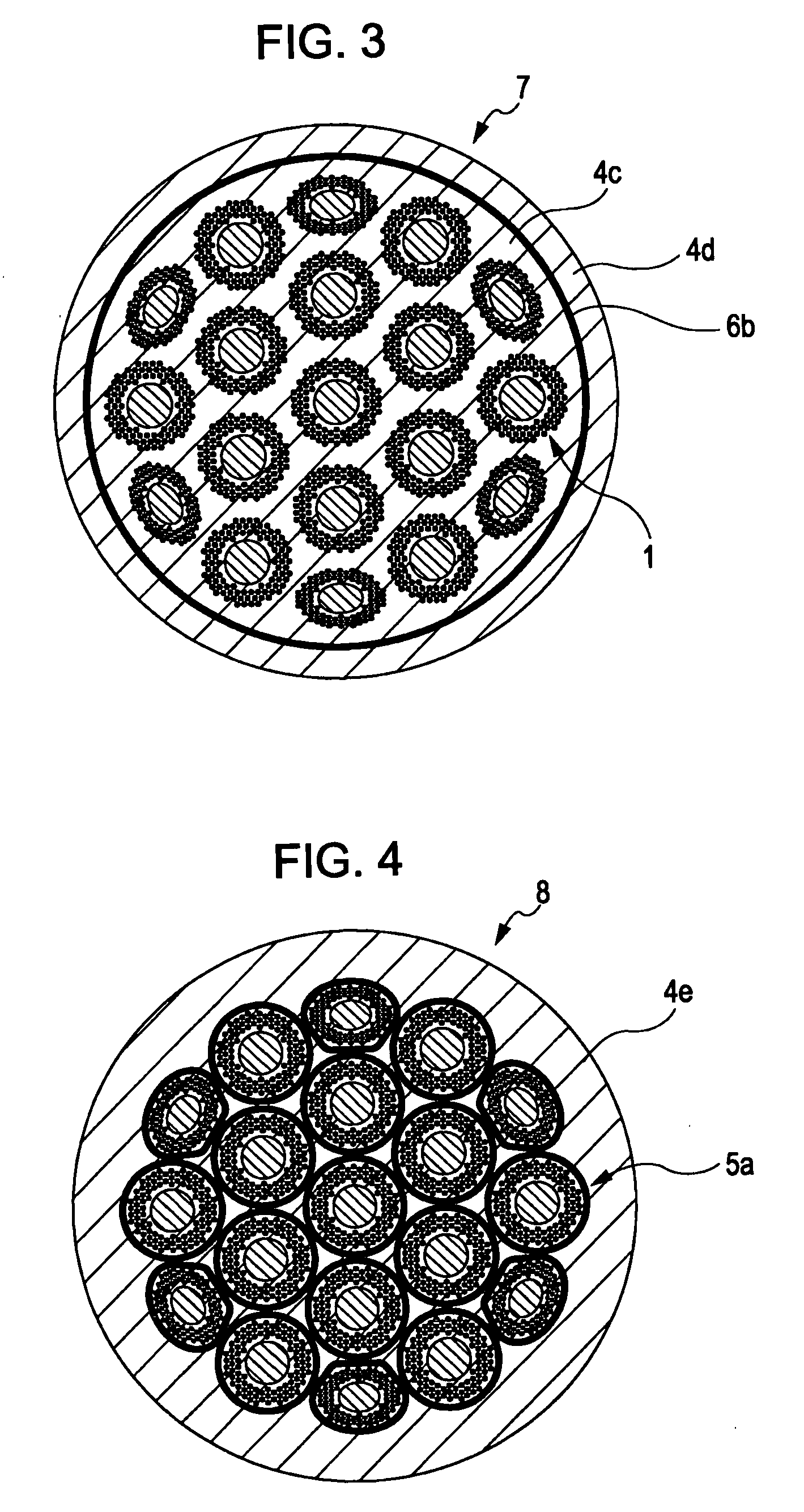Nb3Sn superconducting wire, precursor or same, and method for producing precursor
a superconducting wire and precursor technology, applied in the direction of superconducting magnets/coils, superconductor devices, magnetic bodies, etc., can solve the problems of difficult formation of superconducting connections, deterioration of crystallinity, and difficulty in achieving high critical current density jc, etc., to achieve excellent superconducting properties, reduce the size and cost of magnets, and reduce the cost of wires. , the effect of reducing the size o
- Summary
- Abstract
- Description
- Claims
- Application Information
AI Technical Summary
Benefits of technology
Problems solved by technology
Method used
Image
Examples
example 1
[0054]A precursor (double-barrier multi-element wire), having a cross-sectional shape shown in FIG. 7, for producing a superconducting wire was produced by the following procedure. A Nb core having an external diameter of 28 mm was inserted into a Cu pipe having an external diameter of 33.8 mm and an internal diameter of 29 mm. The resulting pipe was subjected to a reduction process to form a Cu / Nb composite single-core wire having a hexagonal sectional shape (hexagon opposite side distance: 4.3 mm). The resulting wire was corrected and cut into a length of 400 mm. In this case, the resulting Nb core had a diameter of 3.87 mm.
[0055]A Cu hollow billet including a Cu outer cylinder having an external diameter of 143 mm and internal diameter of 128 mm and a Cu inner cylinder having an external diameter of 70 mm and internal diameter of 61 mm was prepared. A Nb sheet having a thickness of 0.2 mm was attached to the inner surface of the Cu outer cylinder of the Cu hollow billet to form a...
example 2
[0062]A precursor (double-barrier multi-element wire), having a cross-sectional shape shown in FIG. 9, for producing a superconducting wire was produced by the following procedure. A Cu / Nb composite single-core wire with a hexagonal sectional shape (hexagon opposite side distance: 2.0 mm) was produced as in EXAMPLE 1. The resulting wire was corrected and cut into a length of 5 m. A Sn alloy core containing 2% by mass Ti was inserted into a Cu pipe having an external diameter of 24.0 mm and an internal diameter of 21.0 mm. The resulting pipe composite was subjected to reduction process to form a Cu / Sn composite single-core wire having a hexagonal sectional shape (hexagon opposite side distance: 2.0 mm). The resulting wire was corrected and cut into a length of 5 m. Furthermore, a cylindrical complex, having an external diameter of 33.8 mm and an internal diameter of 29 mm, shown in FIG. 6 was produced as in EXAMPLE 1.
[0063]A bundle in which 114 Cu / Nb composite single-core wires were ...
example 3
[0066]A precursor (double-barrier multi-element wire), having a cross-sectional shape shown in FIG. 10, for producing a superconducting wire was produced by the following procedure. A single-element wire with a hexagonal sectional shape (hexagon opposite side distance: 4.0 mm) was produced as in Example 1. The wire was corrected and cut into a length of 5 m. The Nb barrier layer of the single-element wire was set so as to have a thickness 1.0 time the diameter of the Nb core.
[0067]A cylindrical complex, having an external diameter of 33.8 mm and an internal diameter of 29 mm, shown in FIG. 6 was produced as in EXAMPLE 1. A bundle of 37 single-element wires described above was inserted into the cylindrical complex. Then 18 Cu / Sn complex single-core wires described in EXAMPLES 1 and 2 were inserted into a gap between the cylindrical complex and the single-element wires. The resulting complex was subjected to wire drawing to form a precursor (double-barrier multi-element wire) for prod...
PUM
| Property | Measurement | Unit |
|---|---|---|
| magnetic field | aaaaa | aaaaa |
| thickness | aaaaa | aaaaa |
| internal diameter | aaaaa | aaaaa |
Abstract
Description
Claims
Application Information
 Login to View More
Login to View More - R&D
- Intellectual Property
- Life Sciences
- Materials
- Tech Scout
- Unparalleled Data Quality
- Higher Quality Content
- 60% Fewer Hallucinations
Browse by: Latest US Patents, China's latest patents, Technical Efficacy Thesaurus, Application Domain, Technology Topic, Popular Technical Reports.
© 2025 PatSnap. All rights reserved.Legal|Privacy policy|Modern Slavery Act Transparency Statement|Sitemap|About US| Contact US: help@patsnap.com



